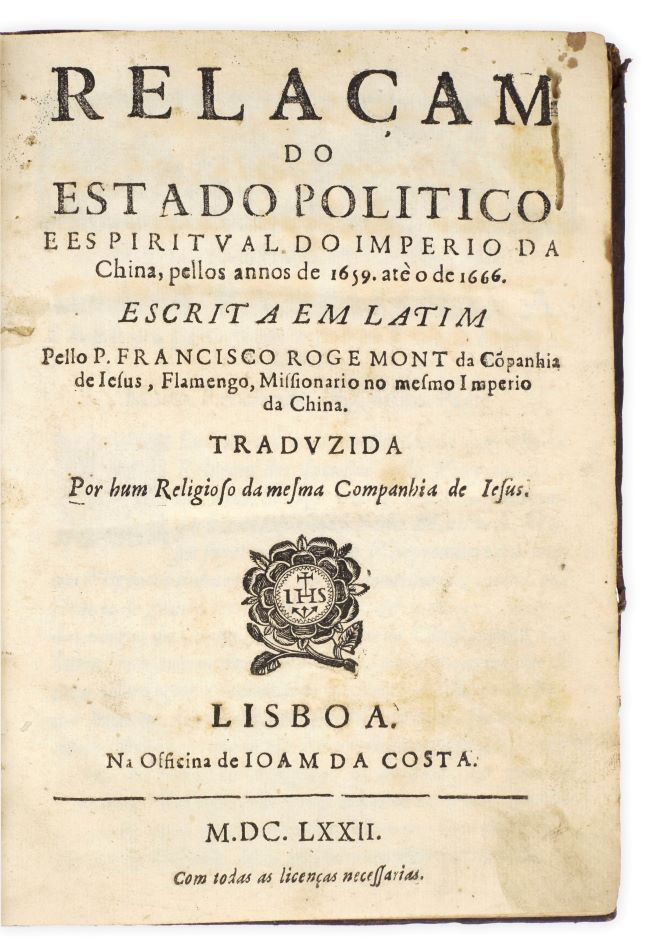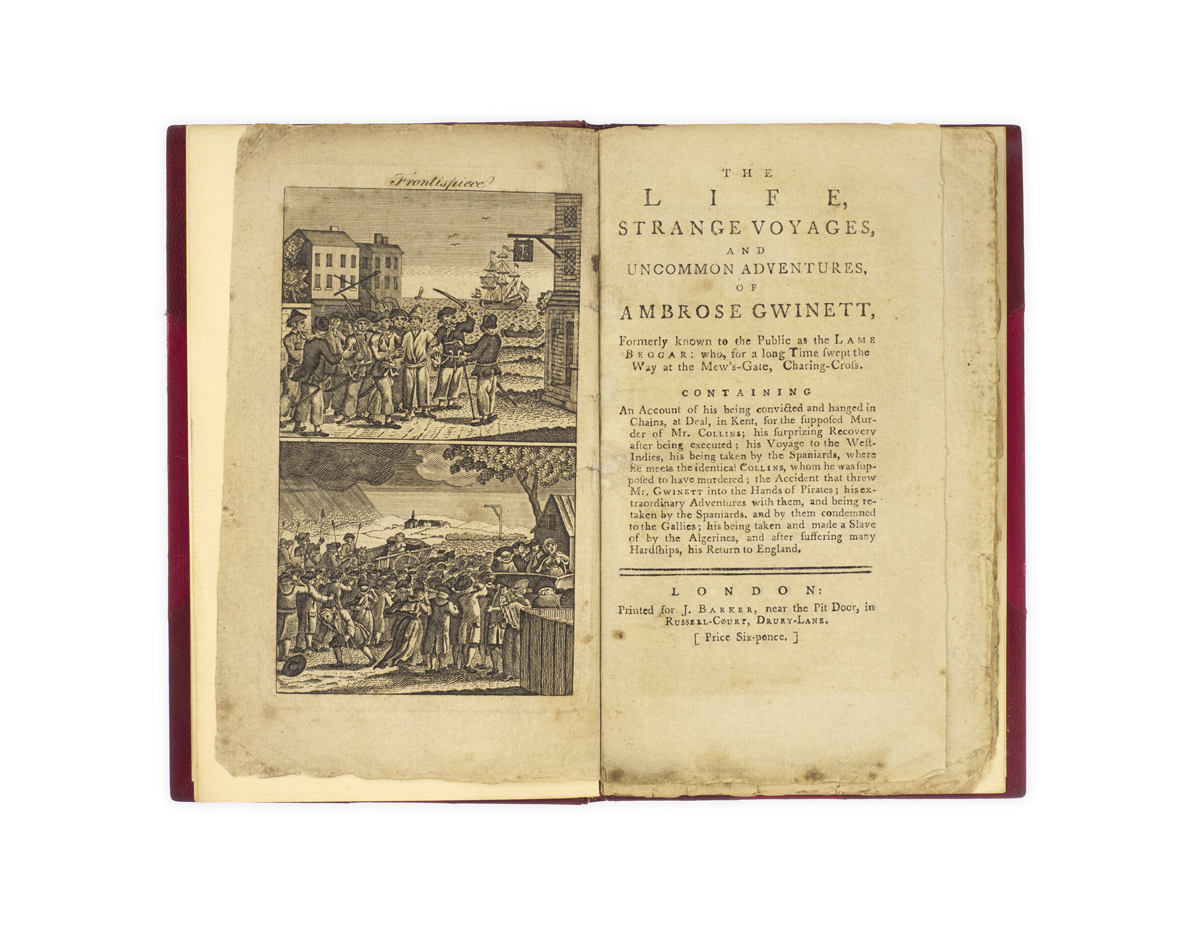
BIG TROUBLE IN MANCHU CHINA
ROUGEMONT, François de.
Relacam do estado politico e espiritual do imperio da China, pellos annos de 1659 atè o de 1666. Escrita em Latim pello P. Francisco Rogemont … Traduzida por hum religioso da mesma Companhia de Iesus.
Lisbon, Joao da Costa, 1672.
4to, pp. [8], 229, [1 (blank)]; woodcut Jesuit device to title, woodcut initials, head- and tailpieces; some marginal worming and browning, a few marks, nevertheless good in contemporary dark brown calf with gilt decoration and lettering-piece to panelled spine; upper joint split at foot, a little worming to spine and boards, some creasing and marks to covers; early ink note facing title.

Added to your basket:
Relacam do estado politico e espiritual do imperio da China, pellos annos de 1659 atè o de 1666. Escrita em Latim pello P. Francisco Rogemont … Traduzida por hum religioso da mesma Companhia de Iesus.
Portuguese translation, scarce on the market, of the Dutch Jesuit François de Rougemont’s history of mid seventeenth-century China, published a year before the appearance of de Rougemont’s Latin original. Inspired to join the Chinese missions after meeting the famed Jesuit sinologist Martino Martini in Louvain, Rougemont arrived in Macao in 1658 and would remain in China until his death in 1676. An erudite scholar whose translations of Confucius would later appear in Philippe Couplet’s seminal Confucius Sinarum Philosophus of 1687, Rougemont also spent a significant period engaged in pastoral efforts, particularly among the Chinese Christian community in Jiangnan, as well as defending the Jesuit position on the Chinese Rites at the Canton Conference in 1668.
The years between 1659 and 1666, the period covered by Rougemont, were a period of great turmoil in China. On the one hand, the political upheaval caused by the Manchu invasion and the fall of the Ming dynasty had led to an imperial succession crisis, a crisis which was not improved when in 1661 the compromise candidate, the Shunzhi emperor, died of smallpox at the age of just twenty-two. On the other hand, the Manchu conquest also led to a deterioration in the relationship between the imperial court and Jesuit missionaries, and the following years saw a significant rise in Christian persecutions culminating in Rougemont’s imprisonment and his six-year exile to Canton (Guangzhou). Split into three parts, Rougemont’s history chronicles the various afflictions of these tumultuous times: in part I, he offers a detailed description of the Manchu consolidation of power; in part 2, he describes the reign of the Shunzhi emperor and the fates which befell the various Ming pretenders to the throne; and in part 3, he covers the Oboi regency after 1661, with particular emphasis on the trials and persecutions of missionaries. Rougemont’s narrative ends in 1666 with the ascension of the Kangxi emperor, who was to rule China for more than half a century – and who would, unbeknownst to Rougemont, preside over both the temporary recovery and eventual dissolution of the Jesuit missions in China. Like many contemporary works by Jesuit sinologists, Rougemont’s manuscript was first transported back to Europe before it was subsequently published as Historia Tartaro-Sinica Nova in 1673. This copy is a Portuguese translation, published – rather surprisingly – a year before the Latin version, and is the (anonymous) work of Sebastien de Magalhães.
Cordier, Sinica 628; Lach and Van Kley III, pp. 358, 1677; Lust 453. No copies recorded on Rare Book Hub since 1975.

